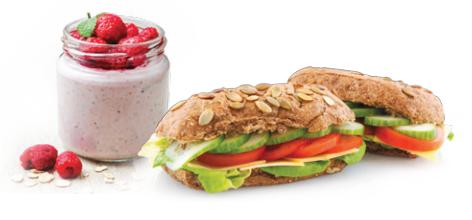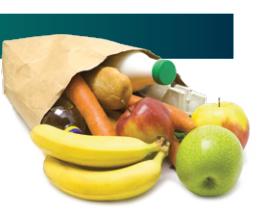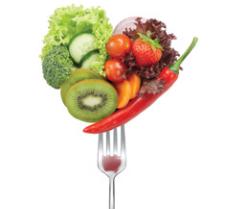
Find out food that are heart-healthy
It may be clear to many of us that a healthy diet and lifestyle lead to better heart health, but are we really eating all the right food and in the right amount?
1. Healthy Food for Your Heart
Fruits and Vegetables
Fruits and vegetables contain dietary fibre which helps to reduce blood cholesterol, but a 2010 National Nutrition Survey (NNS) found that almost 85 per cent of Singaporean adults do not meet the recommended intake of two servings of fruits and two servings of vegetables daily.
Wholemeal/Wholegrain Products, Brown/Unpolished Rice, Legumes and Pulses
These are also high in dietary fibre to lower blood cholesterol. The Health Promotion Board recommends at least one serving of wholemeal product per day.
Beta-glucan, a type of soluble fibre that is found in oats, can help to lower blood cholesterol. If you consume oats, aim for eight to eleven tablespoons of oats daily.

Nuts and Seeds
Nuts and seeds contain fibre and unsaturated fats which are beneficial for the heart. However, consumption should be limited to a small handful as they may lead to unnecessary weight gain due to their high fat content. Always choose the unsalted raw/baked nuts instead of fried/added salt/sugar-coated nuts.
Oily Fish
Salmon, cod, tuna and mackerel are all examples of oily fish which are packed with Omega-3 fatty acids that contain anti-inflammatory properties and help to improve cardiovascular health. The recommended intake is to have at least 2 servings of 100g oily fish per week.
2. Shopping for Healthier Foods

- Choose products which are lower in sugar, saturated fat and salt, and higher in fibre and calcium.
- Choose products labelled ‘fat-free’, ‘lower fat’, ‘reduced fat’, and with the Healthier Choice Symbol.
- Avoid products that contain hydro-genated fats/oils/shortening, as these are high in saturated fat and trans fat.
- Look for skimmed/low-fat dairy products.
- Choose unsaturated oils such as canola, olive, rice bran and sunflower oil.
- Choose wholemeal/wholegrain/un-polished products.
3. Healthy Dining
When Cooking at Home:
- Choose lower fat cooking methods: steam, grill, bake, boil and stir-fry.
- Use a non-stick cooking pan to reduce the total amount of oil required.
- Replace coconut milk with low-fat yoghurt/evaporated milk.
- Choose natural herbs/spices to flavour food instead of adding salt, MSG, stock cubes and sauces.
- Remove skin and visible fats from chicken/meat prior to cooking.

When Dining Out:
- Choose healthier options (steamed, baked, grilled, stir-fried, boiled or soupy dishes) instead of deep fried ones.
- Ask for more vegetables in your meals.
- Request for less oil or no oil/lard in your dishes.
- Remove skin and visible fats from chicken/meat
- Choose fish, especially those rich in Omega-3s.
- Opt for plain rice instead of flavoured ones like nasi lemak and chicken rice.
- Limit the intake of gravies and sauces which are high in saturated fat and salt.
- Choose plain water, unsweetened tea/coffee or diet soft drinks instead of sugary drinks and juices.
- Eat a serving of fruits or a cup of low-fat yoghurt as dessert instead of cakes or ice-cream which are high in sugar.
4. Control How Much You Eat
- Before and during meals, drink water or zero-calorie beverages to fill up your stomach.
- Use a small plate so you do not overeat.
- For main meals, fill half of your plate with non-starchy vegetables, a quarter with lean protein (e.g. fish, skinless chicken/lean-meat or tofu cooked with low-fat cooking methods), and the remaining quarter with unrefined carbohydrates (e.g. brown rice/ wholemeal bread).
- Chew your food properly before swallowing. Stop eating when you feel 80% full.

By Ms. Valerie Teong
